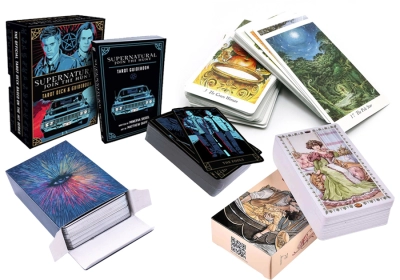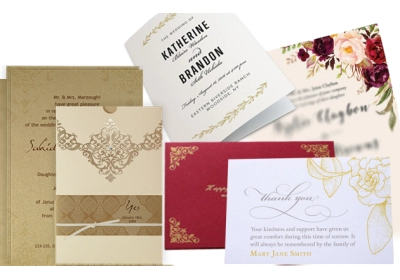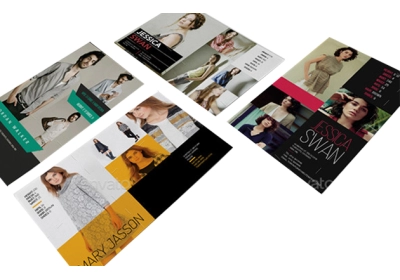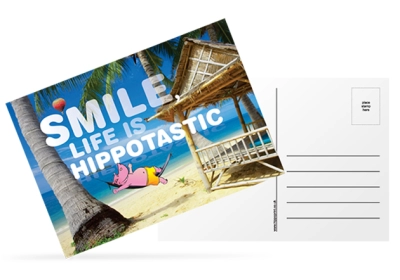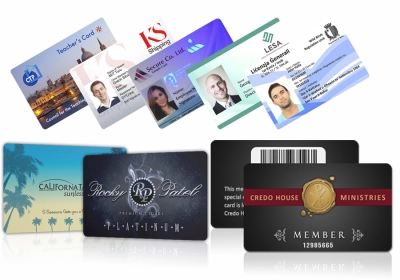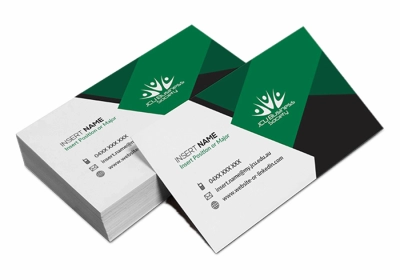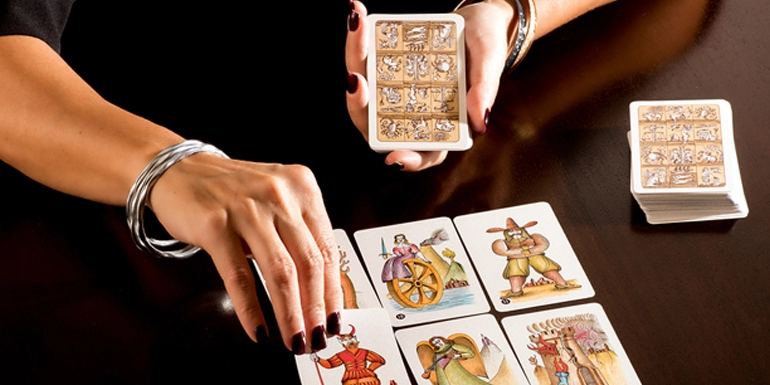
Things to consider making your own Tarot cards
Why would you want to create your own deck when there are so many choices out there? The main reason is to create a deck based on your own vision. You can create one with the artwork you love, that’s the right size for your hands, and that shuffles the way you like.
Another reason to make tarot cards is from self-discovery. A person can learn something new about themselves from each new stack. For example, people learned that their preference was for Major and Minor Arcana cards to blend seamlessly because they often felt like they were using two decks. They may also think they don't like cards with photography.
When you create a card deck, you can share your vision and inspire others. Sharing your creations is a delicate experience - you allow others to see and criticize your creativity. But it's also very beneficial. Many people say they were inspired to create their own deck after seeing someone else's deck of cards.
Are you interested in making your own tarot or oracle deck cards? Here are a few things to consider:
Vision
Your deck begins with your vision for it. What type of deck do you wish to create? How will it be used? What is the overall concept or theme?
What type of deck?
Remember that divination decks fall into different categories and readers will expect to be able to apply a specific system to the deck if it has one, like tarot or Lenormand. For example, people expect a tarot deck to have 78 cards, a major and minor arcana, and court cards. People expect a Lenormand deck to be based on the 36 Lenormand symbols. Of course, you can throw in variations if you like. If you’re creating a unique oracle deck, on the other hand, then you can invent the system for it.
What tarot tradition are you using?
Marseille, Rider-Waite-Smith, or Thoth. These appear to be the main traditions underlying tarot deck formats. Which tradition do you prefer and how will your deck present this tradition?
Personal or public?
If it’s a personal deck (just for your personal readings or study), no one else needs to understand it but you. However, if you plan to make a deck available to the public, the concept should be clear so readers will understand how to use the deck.
Concept
How would people describe your deck and who would be interested in it?
Purpose.
What need does your deck fill for readers? How will readers use the deck (guidance, prediction, meditation, storytelling, etc.)? Does it address a specific type of concern like love or money? The Lover’s Oracle is one of my decks in progress. It’s based on the Italian sibilla decks but with a romance and relationship focus.
Uniqueness.
What’s unique about your deck? Every divination tool should help people gain insights and understanding. But how does your deck do this? What will the deck be known for? Are there any adaptations to the traditional system, such as a change of the suit emblems?
For instance, The Animal Tarot features a landscape orientation which gives it a more cinematic quality. Some people also made the suits elemental (Fire, Water, Air, and Earth) to go along with the nature theme.
Demographics.
Who wants it? Who would your deck appeal to? Does it have a specific theme or genre? Is your deck for certain age groups or tarot study levels?
If you’re at a loss for your deck concept, these questions may help you get to the heart of the deck you wish to create:
- Describe the deck you’ve always wanted but could never find.
- What topics or themes are you passionate about?
- What are your three favorite tarot decks? What do you like about each one?
Write down the answers to these questions in as much detail as possible. Then look through your notes for similarities and themes. Try to see if they point toward a specific deck concept.
Artwork
The artwork should flow from the concept, not supersede it. I often find photos or illustrations I’d love to use but if I can’t come up with a great concept for it, I don’t use it.
With The Cinderella Deck, I found old book illustrations from the book The Wonderful Story of Cinderella: Rhymed and Retold published in 1921. I used the book illustrations for each card so that together they tell the entire story of Cinderella. When using the deck, the seeker is always represented by Cinderella so this helps you understand the seeker’s role in the story of their life.
I’m passionate about playing cards so I’ve created three decks based that combine the analytical system of playing cards with visual symbols. For example, the Medieval Secrets Oracle is a deck featuring characters that interact with each other through their body language to tell a story. You can use the playing card symbols to interpret your reading or just the visual symbols and keywords.
How are the images created?
There are many techniques for creating images, even if you have no artistic talent or experience. If so, you can draw, or make a collage. Other options include using stock photos, vintage photos, and illustrations from ancient books. Digital art is another option, but you don't have to be Photoshop or graphic design expert. In fact, many people simply don't know how to use Photoshop and they don't have a graphic background either. Their original artwork can be created using simple photo editing applications as well as online applications. There are many creative possibilities with today's applications.
Copyright and usage issues.
If you are not creating the artwork yourself, it is important to check. Copyright ownership and use are restrictions placed on how you use other people's photos / artwork. You want to make sure that you can use the photos for commercial purposes.
Printing Tarot Cards and distribution
Once you’ve created the deck, you want to print it, right? But how? That may depend on how many copies you need. Will you distribute the deck or have another party distribute it for you?
How will you print the deck?
If it's a commercial card, you can scan your artwork and convert it into a digital image so it can be printed from a computer or sent to a tarot card printing company. One type of printing company to pay attention to is the print-to-order process which allows printing in small quantities. This means you don't need to order in large quantities. You can order just 50 sets of deck cards if you want. This is an especially great option for creating a private deck or receiving a deck prototype for review. When printing decks, you also need to consider the size and quality of the card stock. Some people prefer a standard tarot size deck or prefer something smaller like a standard poker card size.
How to distribute it?
If you are making it available to the public, or for commercial purposes, you must decide how to distribute it. One way is to provide images in high-resolution .jpg format, vector-based format or .pdf for the downloadable version so that they can be printed with sharp and adequate results.
If you distribute decks, it's best to buy in bulk to lower the price of your cards and then sell them for a higher price. One limitation is the cost of buying in bulk and marketing the deck to potential buyers. You should also consider shipping costs.
Getting started to making your tarot cards
- Set an intention. Before you can sketch or talk about aesthetics, you have to start with design issues. You must know why. Why did you build the deck in the first place? Is your deck trying to solve a problem or is this a way for you to express yourself? Are you building a deck because you want to make a sale, meet a specific endorsement, or learn the tarot a little better?
- Start with a concept. Currently independently created decks are theme based. Saying "I want to make a tarot deck" is too broad. Qualification of your creation. Do you want it to be an animal deck? Why? Would you like it to be based on "Stranger Things?" 80s soap operas? Political figure?
- Choose an art style. Can choose a collage because it's media that makes it comfortable, but if you love Impressionism, Op-art, post-modernism, go ahead and do whatever you like, unless you're creating a deck for an extended style of your portfolio. It's important to define your parameters so that you produce a visually cohesive deck. This is where you need to understand your own artistic abilities.
- Before you start, make sure you know what you are getting into. I know that many artists who know nothing about tarot learn deck making. People feel, however, that their deck feels different to an actual tarot reader. They cannot be used like a deck created by people who really know their archetype, are able to work with a spread, and can read for themselves or for others. When you know how to use tarot, you capture the subtle elements artists - no matter how good at their craft - won't see it. Build a tarot deck if you are familiar with tarot. Make an oracle deck if you know how to use it.
- Do a trial run. Whether you want to produce the deck commercially or just want to own a copy of it yourself, know that the work isn't done after you've finished the artwork. You want to see if everything works in tarot card form. Look for a printing service that can print samples starting with regular card stock. This is to see if your artwork works in the size you choose. This will also help you see if you have any other problems.
- Revise, revise, revise. Now that you've got the sample in your hand, have used it for 10, 20, 50 readings, you'll know what needs to change and what needs adjusting.
- Study the market. If you are confident with your deck, you can complete it professionally now! You can make multiple copies for yourself. Rest assured that you have tested your deck, customized it as much as you needed, and took everyone's input into account as well. See if people are interested in the new faux deck you are using. If people seem genuinely interested, consider going commercial. Go over your numbers and see if they are good enough to make you feel like you're taking a calculated risk.
If you're into tarot card reading, Bali Print Shop personalized tarot cards maker will be a perfect addition to your professional services. All cards are printed with full color and can be each individually customized both front and back.

